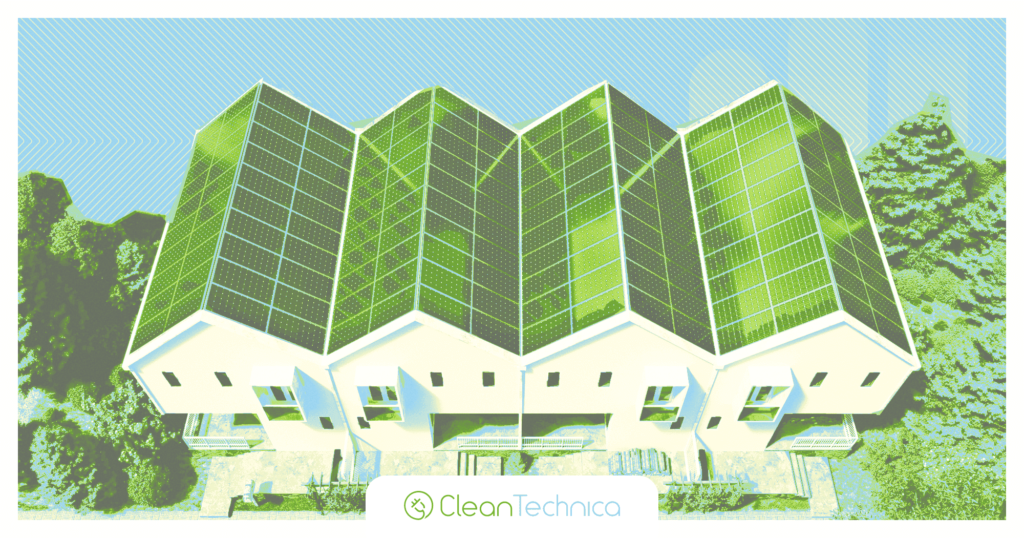
Sign up for daily news updates from CleanTechnica on email. Or follow us on Google News!
One of the privileges of creating content for an independent media source is reporting the good news about clean energy and energy efficiency. Otherwise, it tends to be unreported or overlooked although it is happening and does exist. Years ago, someone told me that solar power for homes was too expensive and I told the person then that it actually was at its most affordable, which was the truth. The person wrongly assumed one of the most common solar power myths without bothering to do even a little online research. Today, with the current White House energy “leadership” and all the social media misinformation out there, publishing accurate information about sustainability wins appears to be even more needed.
To that end, let’s get to the following interview. For a little context, if you have not heard of ABB, it is a mult-natiional engineering company headquartered in Zurich, Switzerland. ABB has over 100,000 employees working in about 100 different countries. When I heard that an ABB service site in South Carolina had completed implementing various measures to increase energy efficiency and utilize solar power, it seemed like a good opportunity to find out what they were working on.
Shawn Shockey, Manager of Manufacturing for ABB Electrification Service, answered some questions about their efforts for CleanTechnica.
How did using modern AC control automation eliminate the need for natural gas heating?
By modernizing our facility’s HVAC infrastructure with automated, high-efficiency rooftop AC units, we’ve successfully eliminated the need for natural gas heating, which relied on traditional mechanical dials. This upgrade involved us retrofitting with intelligent electrical solutions to enhance operational efficiency while delivering superior heating capacity through electric power alone, enabling us to fully transition away from supplementary gas heating.

Did you get rid of an onsite natural gas tank?
Yes, as part of our facility’s transition to all-electric operations, we successfully decommissioned and removed the 1000-gallon onsite propane gas storage tank. This aligns with our commitment to sustainable operations and demonstrates how modernizing electrical infrastructure can both enhance safety and reduce carbon emissions.
By using a narrower restricted flow pipe and low-flow faucets, how much water will be saved?
Our water conservation initiative involved two key changes: installing low-flow faucets and optimizing our water supply infrastructure. Low-flow fixtures such as those we installed typically reduce water consumption by 30–50%.
We also addressed a legacy issue where our older pedal-controlled hand-washing stations would activate multiple faucets simultaneously for group hand washing. Many of these features were implemented due to the ABB Florence facility initially being used for manufacturing purposes, but after transitioning to a service-related factory, we no longer required such a large incoming line of water. By installing individual faucets with modern controls, we’ve significantly reduced water waste while maintaining the functionality required for our facility.
240V metal halide lighting was replaced with modern LED units, how much less electricity is used?
The replacement of our 240V metal halide lighting with modern LED units has delivered substantial energy savings of roughly 200 KWh per year. The project achieved payback in under two years due to the significant reduction in electricity consumption.
How does the Ndustrial continuous energy usage optimization increase efficiency? How many sensors does it use and where are they located?
The Ndustrial energy monitoring system is transforming how we optimize power usage through real-time data analytics. By providing granular visibility into electrical loads and consumption patterns across our facility, we can quickly identify and eliminate energy waste. For example, the system revealed our compressed air system was running unnecessarily during weekends without any active load.
This insight allowed us to implement shutdown procedures every Friday, eliminating wasted energy while maintaining operational readiness.
Through continuous monitoring, we were able to detect parasitic loads and unusual consumption patterns that might indicate equipment issues or opportunities for further optimization.
What kind of work is done at the Florence facility?
The Florence facility is an assembly and test operation specializing in repair and modernization of electrical equipment. We service and optimize power delivery systems, primarily switchgear and medium-voltage equipment rated 480V and above. Our work supports critical infrastructure across transmission and distribution of power utilities, industrial facilities like steel mills and paper plants, and commercial buildings such as hospitals and data centers. Through these services, we help customers maximize the reliability, availability and efficiency of their electrical systems and assets while extending equipment lifetime.
When will the solar power system be installed and operating?
ABB Florence was recently equipped with an 800 KW solar power system that is now actively generating power. The chosen system utilizes a dynamic tracking system that follows the sun’s path throughout the day, rather than using fixed panels.
About how much of the facility power will it provide? How much could the solar power system save in power costs?
The solar field is designed to meet our facility’s full power requirements under optimal conditions. In practice, we expect the system to consistently provide 60-80% of our daily power needs. This will depend on different weather conditions, cloud cover, and available sunlight. As such, we expect to reduce our dependency on the grid for up to 80 KWh in power and energy utilization. Despite the intermittency, this demonstrates how on-site renewable generation can significantly lower operational expenses while advancing sustainability goals.
Chip in a few dollars a month to help support independent cleantech coverage that helps to accelerate the cleantech revolution!
Have a tip for CleanTechnica? Want to advertise? Want to suggest a guest for our CleanTech Talk podcast? Contact us here.
Sign up for our daily newsletter for 15 new cleantech stories a day. Or sign up for our weekly one if daily is too frequent.
CleanTechnica uses affiliate links. See our policy here.
CleanTechnica’s Comment Policy

